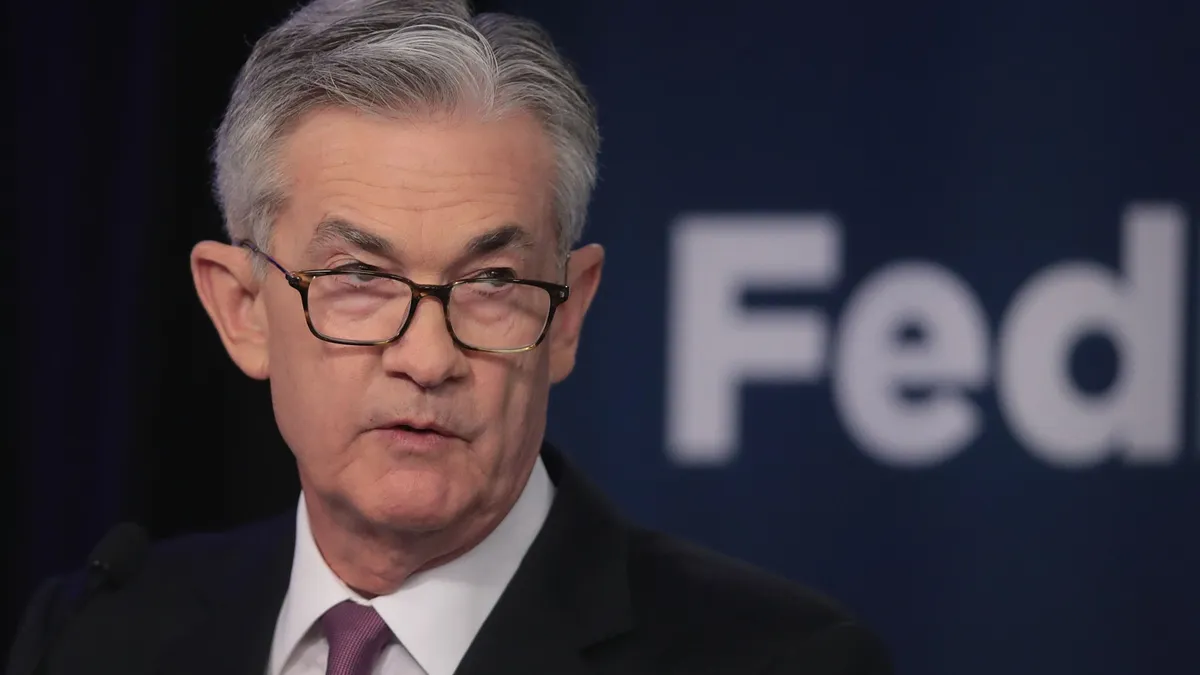Dive Brief:
- Investors on Wednesday set 78% odds that the Federal Reserve will raise the federal funds rate by a half percentage point at the end of a two-day meeting on March 22, reacting to comments by Fed Chair Jerome Powell that to quell inflation policymakers may need to increase borrowing costs higher than expected.
- Early Tuesday, prior to the start of two days of congressional testimony by Powell, investors saw a 32% probability of a half-point hike, according to the CME FedWatch Tool, which calculates expectations based on trading in interest-rate futures markets.
- Most Fed officials forecast in December that they would raise the main interest rate this year to between 5% and 5.5%. “The data we’ve seen so far this year suggests that the ultimate level of rates will need to be higher, but we still have more data to come in between now and the meeting” of policymakers scheduled for March 21-22, Powell said Wednesday in testimony to the House Financial Services Committee.
Dive Insight:
The Fed on Feb. 2 slowed the most aggressive increase in borrowing costs in 40 years by raising the main interest rate by a quarter percentage point to a range between 4.5% to 4.75%. Policymakers increased the rate by a half point in December and by four consecutive 0.75-percentage-point hikes in prior meetings.
Powell said in testimony to the House panel on Wednesday that recent data on employment, consumer spending, manufacturing and inflation have revealed a hotter economy than policymakers expected.
“If — and I stress that no decision has been made on this — but if the totality of the data were to indicate that faster tightening is warranted, we’d be prepared to increase the pace of rate hikes,” Powell said Wednesday. His written testimony was identical to comments made to the Senate Banking Committee on Tuesday.
As Powell began his testimony, the Labor Department reported that openings at U.S. employers totaled 10.8 million in January, a decline from 11.2 million in December but well above the historical trend.
Demand for workers exceeded supply, with 1.9 openings for every unemployed person seeking a job, the Labor Department said.
“The labor market remains extremely tight,” Powell said Wednesday, noting that unemployment insurance claims have hovered near historical lows and the unemployment rate fell in January to 3.4%, the lowest level since 1969.
A Fed survey of its 12 regional banks released Wednesday echoed Powell’s view, noting that “labor market conditions remained solid.”
“Overall economic activity increased slightly in early 2023,”according to the report based on information gathered on or before Feb. 27.
Manufacturing activity stabilized and consumer spending held steady, the Fed said, adding that “inflationary pressures remained widespread, though price increases moderated in many districts.”
The central bank’s preferred inflation gauge — the core personal consumption expenditures price index excluding food and energy — rose to an annual rate of 4.7% in January from 4.6% in December. Also, consumer prices increased 0.5% in January in the biggest gain in three months.
“We are strongly committed to returning inflation to our 2% goal,” Powell testified on Wednesday.
The Labor Department on Friday plans to release data on hiring in February. It is scheduled on March 14 to release data on the Consumer Price Index for February.












